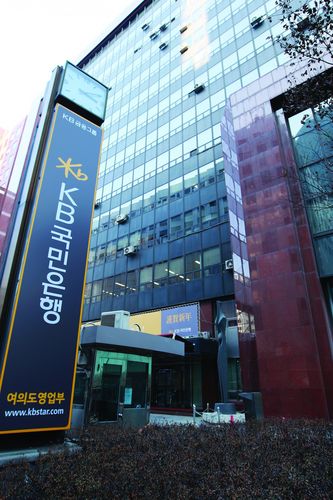Only three covered bond issues have sold in Asia, ex-Japan, ex-Australia since 2009, all of them in Korea. With the success of Australia, other countries are looking at the structure too.
To view the digital version of this report, please click here.
With the runaway successes of the covered bond structure in Australia since November – US$11.2bn issuance year to date according to figures from UBS – little surprise then that the rest of Asia is looking to follow suit. But investors who had hoped for a wave of Asian issuance have been disappointed.
The natural place to start is South Korea. “Korea is the reference point for covered bonds in Asia. Everyone else is thinking about it, but they are all watching Korea,” said Kyson Ho, head of structured finance for Asia-Pacific at HSBC.
Three covered bond issues from the country have hit the market to date. Kookmin Bank, Korea’s largest bank by both asset value and market capitalisation, was not just the first Korean, but the first Asian bank to test the covered bond structure in Asia with an innovative deal in May 2009 via Citigroup and HSBC. The US$1bn five-year sale won plaudits for having opened the market, but criticism for containing some credit card receivables. Nonetheless it paved the way.
It was followed by a US$500m 5.5-year issue from government-related financial institution Korea Housing Finance Corp (KHFC) in July 2010. More recently in July last year, KHFC came to the markets again and sold a US$500m Reg S/144a/3c7 covered bond deal via BNP Paribas, Nomura and Standard Chartered. Rated A3 by Moody’s, the 5.5 year paper priced at 218bp over US Treasuries and was the lowest dollar 144a coupon a Korea borrower achieved last year.
But the hoped-for wave of issuance has not emerged since then.
“Korea is the reference point for covered bonds in Asia. Everyone else is thinking about it, but they are all watching Korea”
There are several reasons why this has not happened. Even though South Korean covered bond guidelines have been praised by the ratings agencies noting they provide a roadmap for potential issuers and an incentive for continuous issuance in the asset class, they are just that – guidelines. “They are yardsticks, but you still have to go to the regulator,” said Jerome Cheng, a vice-president and senior credit officer at Moody’s.
At the end of June, the Korean regulator finally formed a task force to legislate the Korean Covered Bond Act and there are hopes that there will be a covered bond-specific law before the end of the year.
Above all, Korea wants to maintain stability of its currency and avoid any currency spikes. That is why every cross-border deal requires sign-off from the regulator. “It is not a lack of demand for covered bonds. Korea simply does not want a bottleneck of redemptions in one year,” said Thanh Hung Thai, head of structured credit syndicate at Standard Chartered Bank in Hong Kong.
Investor credibility
Aside from currency concerns, niggling detailed issues also remain to be addressed before a meaningful market can emerge. Depositor protection issues have to be clarified, as do issues on the structure of the cover pool. The Kookmin deal in 2009 had a tranche of credit card receivables, so it could therefore be structured using a bankruptcy-remote vehicle. This was useful for the issuer, but not for investors wary of anything that smells however faintly of asset-backed securities. Issues need to remain on balance sheet if they want the same investor credibility as Pfandbriefe.
On top of that, moves by Korea’s Financial Services Commission requiring a minimum proportion of fixed-rate loans in any loan cover pool have slowed down potential issuance. The FSC wants to force households to hedge exposure to variable interest rates. The problem is that only around 5% of Korean residential loans have fixed rate at the moment – a long way off the 30% the FSC expects by 2016.
If this turns into a definite requirement for cover pool, it will take banks another couple of years to originate the loans required to back new issuance. This, like many other issues, remains unclear.
Korea not the only player
But if, by virtue of being the only issuer to date, Korea dominates the Asian covered bond scene, it is not the only player. In March, the Monetary Authority of Singapore indicated that it might allow covered bond issuance from the island state and issued a consultation paper. The rumour mill swiftly suggested that DBS Bank, the largest bank in South East Asia by assets and headquartered in Singapore, would be the first to come to market.
It is easy to see why DBS would be keen to jump in. Based on a sale of five-year senior unsecured in the first quarter of this year at 140bp over US Treasuries, and on the savings that Australian banks have made, it is estimated that the bank could shave 40bp off its funding costs.
The ratings agencies have been cautiously enthusiastic about the MAS’ moves too. Both Moody’s and Fitch called the proposal “positive for Singaporean banks” though the latter predicts that issuance is likely to be “opportunistic”.
The part that has excited the most debate is that the aggregate value of assets in the cover pool be capped at 2% of the value of the total assets of the bank, a level many market players suggest is artificially low. To put that into context, Canada allows 4%, Australia up to 8% and New Zealand a whopping 10%.
Typical caution
As a result some bankers remain sceptical about Singaporean issuance.
“A 2% cap is meaningless,” said one senior banker pointing out that this would allow such a tiny amount of issuance any bonds would be completely illiquid. But others see the move in a more sanguine light. “The 2% cap reflects the potential size of the market. Singapore is a smaller country, there is simply a smaller pool to work with,” said Moody’s Cheng. The expectation too is that the MAS is being typically cautious to begin with and could well move the goalposts after it has tested the water and if there is demand for the asset class.
But StanChart’s Thai pointed out perhaps a more significant hurdle to covered bond issuance from Singapore – push-back from investors. “Given that covered bonds generally price more tightly than senior debt, investors in Asia might not want to give up that much spread,” he explained.
This is a particularly pertinent issue. Singaporean banks are highly rated and already fund themselves at a tight spread. Australian investors might be happy when a covered bond issue funds 100bp in from senior unsecured. The Australian covered bond market, after all, has evolved out of the securitisation and RMBS market. Investors have a natural comfort level with those kinds of structures and welcome the diversification. Singaporean investors do not.
“Indonesia and Thailand have so much domestic liquidity that they have no need to look at the international markets. They can fund much more tightly at home”
And that is why although other jurisdictions are looking at covered bond legislation, investors should not expect an avalanche any time soon. The next move is likely to come from Hong Kong. The Hong Kong Monetary Authority has indicated that it might look at covered bond legislation this year, although no timetable has been set.
Onshore liquidity means that while Asian issuers want to have covered bonds in their back pockets, they don’t necessarily want to use them. “Indonesia and Thailand have so much domestic liquidity that they have no need to look at the international markets. They can fund much more tightly at home,” said StanChart’s Thai bluntly.
In the meantime, covered bond issuance will remain an option, and one looked at increasingly seriously, but it is unlikely to be anything other than a curiosity for the foreseeable future.

